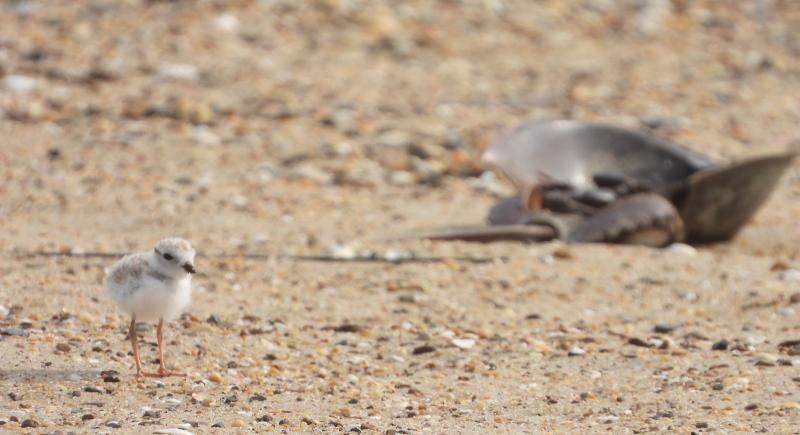Progress being made on increasing piping plover population
As part of a multi-state effort to increase the population of piping plovers along the Atlantic Coast, the state has closed The Point in Cape Henlopen State Park annually through spring and summer for nearly 40 years. The collaborative efforts are beginning to pay dividends in terms of population growth for the birds, but there’s still work to do related to the number of fledglings.
Addressing a room full of potential volunteers interested in helping the state’s biologists collect data on the breeding habits of piping plovers, Matt Young, Division of Fish & Wildlife biologist, said the area of study along the coast runs from the Carolinas, north to New England and into Canada. The goal is to have 2,000 nesting pairs of piping plovers, with each pair averaging 1.5 chicks fledged. If that happens for five straight years, the birds would be considered to have a healthy population, he said.
The number of years in a row with the 2,000 nesting pairs and an average fledgling rate of 1.5 sits at zero, but it was half met. In 2021, said Young, there were 2,109 nesting pairs, but the 1.5 fledgling threshold was not surpassed.
The same is the case for Delaware. In 2021, there was a record number of pairs, 24, but the fledgling rate, .79, was well under the 1.5 desired. However, there have been six consecutive years of growth, and in 2018, 2019 and 2020, the 1.5 threshold was broken.
Young didn’t have a specific reason for the sudden drop in fledglings from 2020 to 2021, but he said the smalls nests are fragile and speculated a couple of large storms in early 2021 that washed out nesting areas could have played a role.
Henrietta Bellman, Fish & Wildlife biologist, oversees the piping plover program for the state. She was at the education session to talk about volunteer expectations and safety protocols, and to answer various asked questions. She was pleasantly surprised with the number of people who showed up. Last time she conducted the same training session, in 2019, there were only eight people in the room.
Young presented the background information on the program. There are four eggs in a full clutch for a piping plover, and incubation takes approximately a month. Both parents incubate and defend the nests, he said.
When the chicks hatch, they’re basically ready to begin feeding themselves, but they are vulnerable to predators.
“They’re like cotton balls with toothpicks for legs at a week old,” said Young. “Their main defense is to drop, lay on the ground, and stay motionless.”
The chicks fledge after 25 days, said Young.
Young said the piping plovers are looking for flat, sandy areas with only a few bits of vegetation to make their nests and they’re camouflaged to match the sand. Once the nests – small indents in the sand with rounded edges – have been made, they’re hard to see, he said.
“If you’re not looking for them, you won’t see them. Especially when they’re nesting,” said Young.
The state doesn’t just monitor The Point. There’s Fowler Beach in Prime Hook, Delaware Seashore State Park, Beach Plum Island and Fenwick Island.
Last year on The Point there were six pairs, said Young. It can fluctuate and there’s not really been much progress, he said.
That’s not the case for Fowler Beach. A recent replenishment project has proven to be a perfect habitat for the plovers, said Young. Last year there were 18 pairs, he said.
Piping plovers are the main attraction, said Young, but there are also red knots, oystercatchers, least terns and other species of birds that will set up on The Point.
The Point’s nesting habitat on the ocean side will reopen to the public Sept. 1. The bayside beach will remain closed until Oct. 1 for use by shorebirds migrating south for the winter.
Chris Flood has been working for the Cape Gazette since early 2014. He currently covers Rehoboth Beach and Henlopen Acres, but has also covered Dewey Beach and the state government. He covers environmental stories, business stories and random stories on subjects he finds interesting, and he also writes a column called Choppin’ Wood that runs every other week. He’s a graduate of the University of Maine and the Landing School of Boat Building & Design.

























































